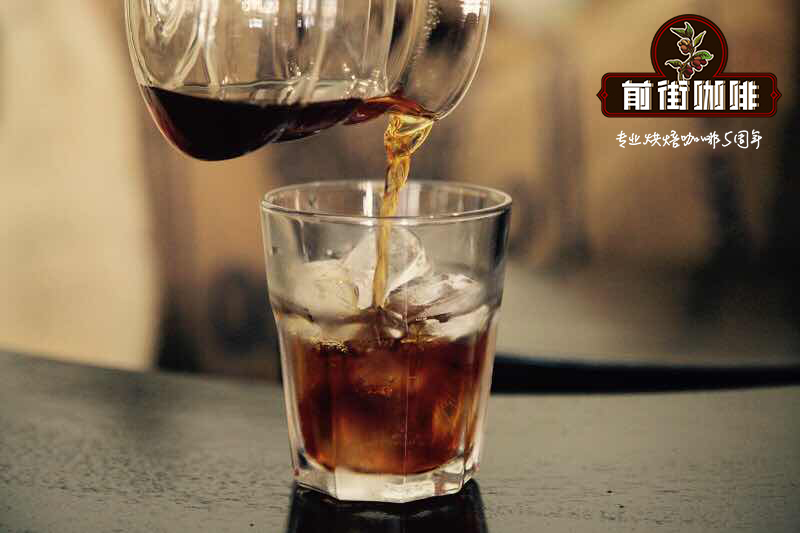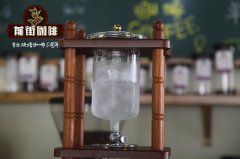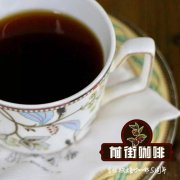Chinese people often go to convenience stores to sell coffee, and foreign countries report that the pace of domestic coffee craze is accelerating.

Professional coffee knowledge exchange more coffee bean information please follow the coffee workshop (Wechat official account cafe_style)
China's coffee boom has accelerated consumption growth of 25% last year.
According to Mintel, China's internal coffee market was worth 64.7 billion yuan ($9.6 billion) last year, up 7.5% from a year earlier, when the growth rate was 6%. The annual growth rate is expected to return to 6% from this year to 2023.
However, while value-by-value sales are booming, Mintel estimates that the number of internal cafes has fallen by 2 per cent as the number of new stores has fallen. But that's half the decline a year ago.
"like many industries in China, the internal coffee market is not immune to the new retail industry," said Belle Wang, a food and beverage research analyst at Mintel.
The rapid expansion of the new retail coffee business across the country has stimulated consumers to consume more coffee, resulting in strong sales. With the growing momentum of new retail coffee shops and more and more international and domestic brands entering the market, today's consumers have more choices in coffee. As a result, the industry will achieve positive growth over the next two years.
"however, this growth will slow, mainly due to the traditional tea drinking behavior of Chinese consumers and the country's booming tea shops," Wang said.
Mintel expects sales to grow positively over the next two years, up 0.6% year-on-year last year, and another 1.2% between this year and this year, reaching 74000 cafes by 2020.
Convenience and tradition
When it comes to choosing where to dispose of their caffeine, today more Chinese consumers buy coffee from convenience stores rather than traditional coffee chains. Mintel research shows that 52 per cent of Chinese consumers (a sample of 3000 people) buy coffee at convenience stores, while only 44 per cent buy coffee from traditional coffee chains.
About 23% of consumers drink in-house coffee at least once a month, which is already done in new retail cafes.
Our research shows that more in-house coffee users get coffee from convenience stores rather than traditional chain cafes. This may be because Chinese consumers associate convenience stores with a variety of breakfast options. Convenience stores are also seen as easy to access and more affordable. Given this rising trend, other coffee suppliers can introduce unique features, such as providing a variety of food and coffee pairs to compete, "Wang said."
Although new retail coffee is currently experiencing a lot of growth, consumer participation is still low-in part because they are still relatively new. However, the new retail cafes have the opportunity to catch up with popularity by offering positive discounts and delivery services. "
In other words, a large discount is not enough, because a discount is neither the best strategy for a long-term business plan nor a sustainable strategy. There need to be other advantages, such as offering healthy mash-up offers, "Bell added."
Latte is the first choice.
Mintel's research reveals the most popular coffee drink in China's coffee boom. More than half of local coffee consumers ordered lattes (54%) or cappuccinos (52%). This was followed by mocha coffee (45%), American coffee (38%), flavor coffee (36%), espresso (26%) and cold coffee (23%).
A relatively new concept in the Chinese coffee boom is that coffee is mixed with plant protein milk, with 22% of internal coffee users ordering coffee.
Lattes and cappuccinos are the most popular drinks in cafes because of their creamy texture and rich dairy taste. In addition, because they are usually widely used, they are often the first step in coffee appreciation, "Wang said."
"once consumers fully appreciate these basic drinks, they are more likely to try non-milk drinks, such as American coffee or cold coffee. However, providing only basic coffee options makes it difficult to stand out in the homogeneous coffee market and attract more coffee consumers.
"as a result, cafes can draw inspiration from teahouse drinks to make their products more visually attractive and can be" eye-catching "to attract attention and interest," Bell concluded.
Important Notice :
前街咖啡 FrontStreet Coffee has moved to new addredd:
FrontStreet Coffee Address: 315,Donghua East Road,GuangZhou
Tel:020 38364473
- Prev

Arabica Coffee Futures 13-year minimum Brazilian Coffee exporters apply for bankruptcy Protection
Sao Paulo (Reuters)-Coffee workshop (Wechat official account cafe_style) Sao Paulo (Reuters)-Terra Forte, one of Brazil's largest coffee exporters, has filed for bankruptcy protection in Sao Paulo state court, the company's lawyer said on Wednesday. Law firm Freire,Assis,Sakamoto e Violante said that Terra Forte
- Next

The change of scene brings new business type Cafe to a new way.
Professional coffee knowledge exchange more coffee bean information Please follow Coffee Workshop (Wechat official account cafe_style) Cafe seems to be a word with petty bourgeoisie color, but in today's world where coffee is available everywhere, why do people go to coffee shops? The reason why cafes attract us is that behind the coffee, these small cafes are also public places where people feel to live together.
Related
- What effect does Italian American coffee with filter paper have? Will coffee taste better if it is put on filter paper at the bottom of the powder bowl?
- What is the color difference in coffee beans? What are the characteristics of honey processed coffee beans? Why are the anaerobically treated coffee beans uneven in color?
- How does novice Xiaobai quickly get started and make coffee? Newbies learn to make coffee by hand and share the specific steps and process process!
- Costa tea has a shelf life of 100 years?! Expert: Unable to verify
- It's a huge uproar! American milk addition was rejected by Manner employees?!
- Mocha pot coffee bean recommendations| How fine and how much powder should be used for grinding? What parameter ratios do I need to use to make milk with Mocha pot coffee?
- What are the characteristics of the world's top ten coffee beans treated with Costa Rica honey? How to make black honey kadura from Tarazhu Pilon Processing Plant taste good?
- How to make deep-roasted coffee? What grinding water temperature does authentic Jamaica Blue Mountain No. 1 coffee use to brew it well?
- Selected high-grade rose summer coffee flavor tasting guide Why Panama rose summer has the aroma of flowers and fruits
- What equipment does a novice Xiaobai need to buy to learn to make coffee? Filter cup electronic scale bean grinder manual flushing pot purchase guide

